An Obd2 Car Code Scanner is an essential tool for any car owner, mechanic, or automotive enthusiast. It allows you to tap into your vehicle’s onboard computer, retrieve diagnostic trouble codes (DTCs), and understand what’s ailing your car. This comprehensive guide will delve into everything you need to know about OBD2 car code scanners, from choosing the right one to interpreting the data they provide. Learn how to empower yourself with the knowledge to diagnose and potentially fix car problems, saving time and money. For more information on specific scanners, check out this wireless bluetooth obd2 obdii diagnostic car scanner code reader.
What is an OBD2 Car Code Scanner?
An OBD2 car code scanner, also known as an OBD2 reader or diagnostic scanner, is an electronic device that connects to your car’s OBD2 port. This port, typically located under the dashboard on the driver’s side, provides access to the vehicle’s computer system. The scanner retrieves diagnostic trouble codes (DTCs), which are standardized codes that indicate specific malfunctions within the vehicle’s systems.
Once connected, an OBD2 car code scanner can display these DTCs, along with other valuable data such as freeze frame data, live sensor readings, and emissions readiness status. This information can help you pinpoint the root cause of car problems, ranging from a simple loose gas cap to more complex issues with the engine, transmission, or emissions system.
Choosing the Right OBD2 Car Code Scanner
With a plethora of OBD2 car code scanners on the market, selecting the right one can be daunting. Consider your needs and budget. Basic code readers are affordable and suitable for retrieving DTCs, while more advanced scan tools offer additional features such as live data streaming, bidirectional control, and special functions for specific car makes.
Are you a DIYer looking to tackle basic car maintenance? A simple code reader might suffice. For professionals or serious car enthusiasts, a high-end scan tool with advanced functionalities is recommended. Check out our review of the foxwell nt301 car obd2 code scanner review.
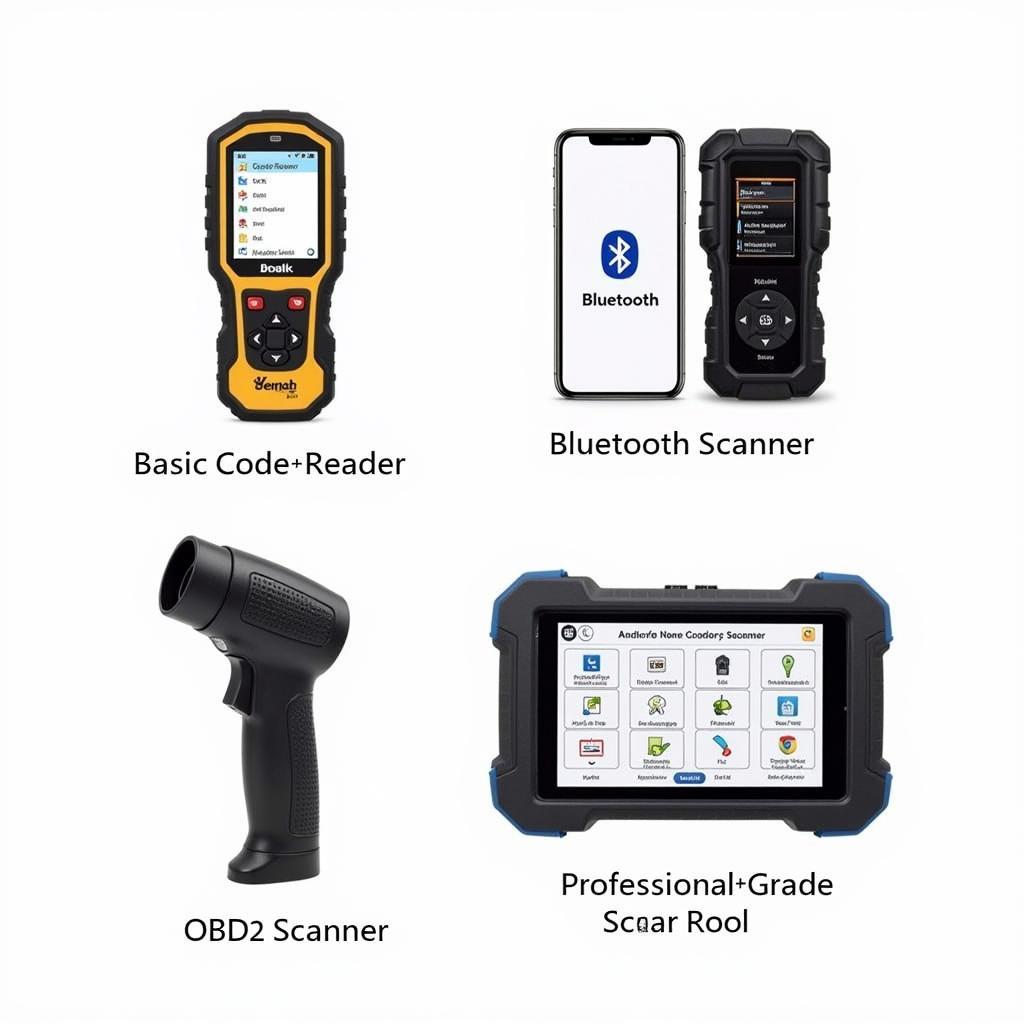 Different Types of OBD2 Scanners
Different Types of OBD2 Scanners
How to Use an OBD2 Car Code Scanner
Using an OBD2 car code scanner is generally straightforward. Locate your car’s OBD2 port, usually under the dashboard. Plug the scanner into the port. Turn on the ignition, but don’t start the engine. The scanner will power on and begin communicating with your car’s computer. Follow the on-screen prompts to read and interpret the retrieved codes.
Remember, an OBD2 car code scanner is a diagnostic tool, not a magic bullet. It identifies potential problems, but further investigation may be required to determine the exact cause and appropriate solution.
Understanding OBD2 Trouble Codes
OBD2 trouble codes consist of a five-character alphanumeric sequence. The first character indicates the system affected (e.g., “P” for powertrain, “B” for body, “C” for chassis, “U” for network). The second character signifies the code type (“0” for generic, “1” for manufacturer-specific). The remaining three characters specify the specific fault. You can find more helpful information on our car obd2 scanner code reader page.
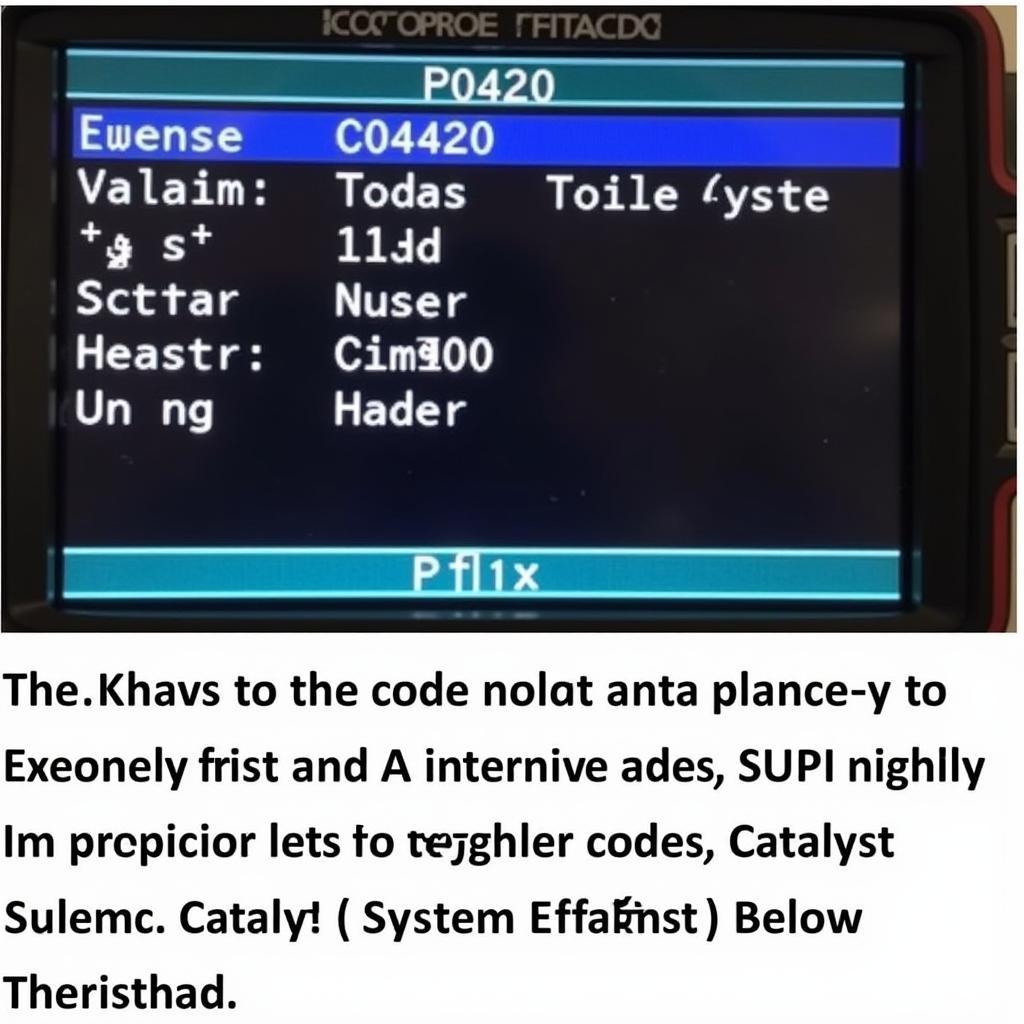 Example of an OBD2 Trouble Code
Example of an OBD2 Trouble Code
Beyond Basic Code Reading: Advanced Features
Many OBD2 car code scanners offer advanced features beyond basic code retrieval. Live data streaming allows you to monitor real-time sensor data, providing insights into the vehicle’s performance. Bidirectional control enables you to activate certain components, such as fuel injectors or solenoids, for testing purposes. Some scanners also include special functions for specific car makes, such as ABS bleeding or DPF regeneration. Consider a dr meter obd2 wifi car code scanner for advanced features.
Why is an OBD2 Scanner Important?
John Smith, a seasoned automotive technician, emphasizes the importance of an OBD2 scanner: “An OBD2 scanner is an invaluable tool for anyone working on cars. It’s like having a direct line to the vehicle’s brain, allowing you to quickly diagnose problems and save valuable time and money.”
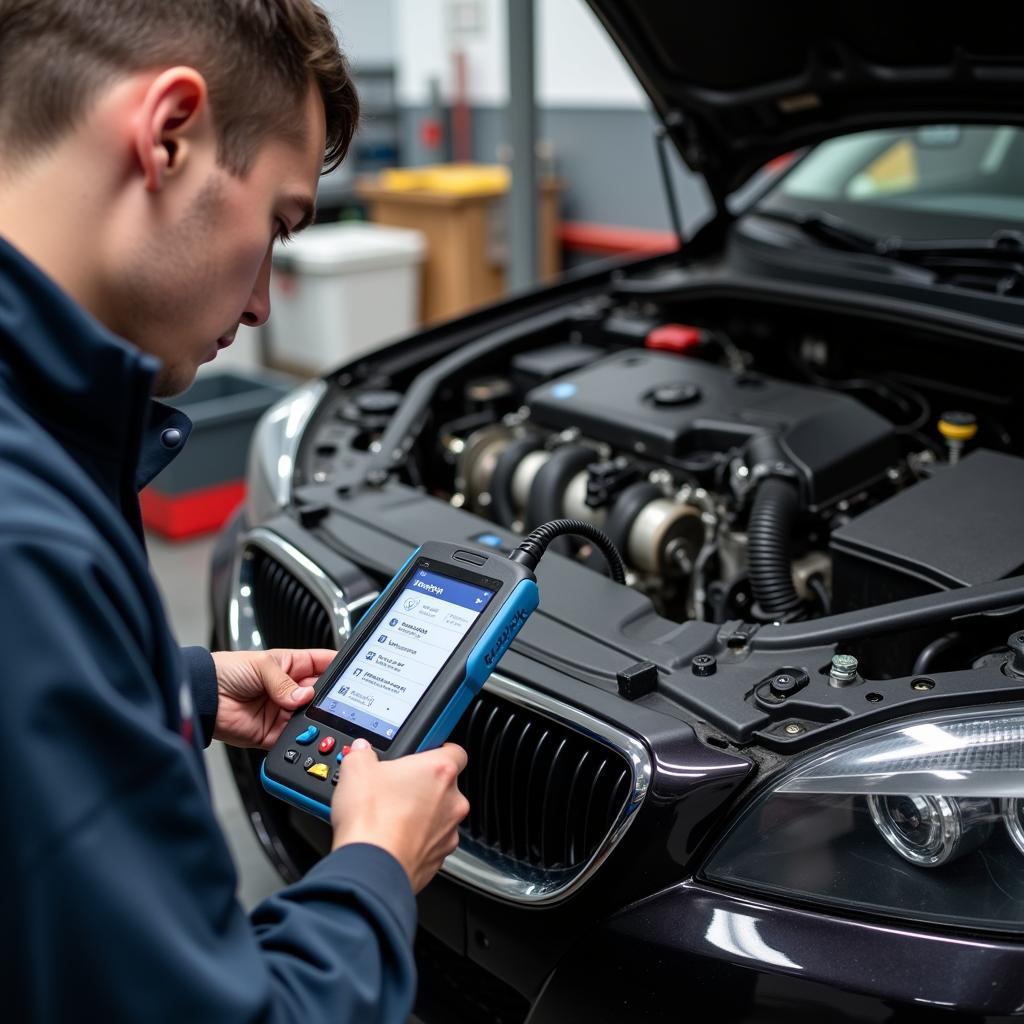 Mechanic Using an OBD2 Scanner
Mechanic Using an OBD2 Scanner
OBD2 Car Code Scanner: Empowering Car Owners
An OBD2 car code scanner empowers car owners with the knowledge to understand their vehicles better. By retrieving and interpreting trouble codes, you can make informed decisions about repairs and maintenance. This can save you from unnecessary trips to the mechanic and potentially costly misdiagnoses. You might also want to check out the kobra products obd2 scanner & wifi car code reader.
Conclusion
An OBD2 car code scanner is an indispensable tool for anyone involved with automobiles. From basic code readers to advanced scan tools, the market offers a wide range of options to suit diverse needs. By understanding how to use an OBD2 car code scanner and interpret the data it provides, you can take control of your car’s diagnostics, saving time and money in the long run. Contact us at ScanToolUS at +1 (641) 206-8880 or visit our office at 1615 S Laramie Ave, Cicero, IL 60804, USA for further assistance.
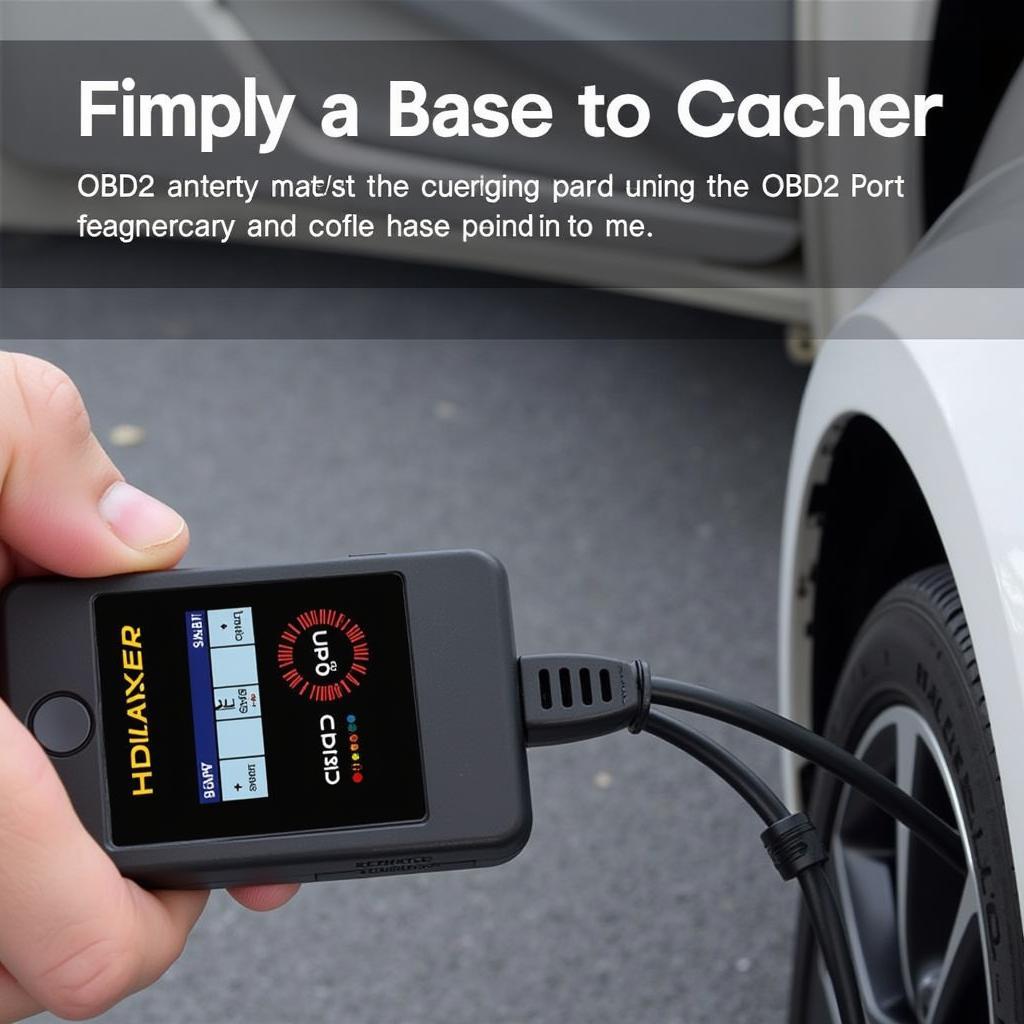 OBD2 Scanner Connected to a Car's OBD2 Port
OBD2 Scanner Connected to a Car's OBD2 Port
FAQ
-
What does OBD2 stand for?
OBD2 stands for On-Board Diagnostics, Second Generation. -
Are all cars compatible with OBD2 scanners?
Most cars manufactured after 1996 in the United States are OBD2 compliant. -
Can an OBD2 scanner fix car problems?
No, an OBD2 scanner is a diagnostic tool, not a repair tool. It identifies problems but doesn’t fix them. -
What is a freeze frame data?
Freeze frame data captures a snapshot of the vehicle’s operating conditions at the time a trouble code was set. -
How often should I use an OBD2 scanner?
It’s a good practice to use an OBD2 scanner whenever your check engine light comes on or you suspect a problem with your car. -
What are some common OBD2 trouble codes?
P0420 (Catalyst System Efficiency Below Threshold) and P0171 (System Too Lean Bank 1) are common OBD2 codes. -
Where can I find more information about specific OBD2 trouble codes?
Numerous online resources and repair manuals provide detailed information about specific OBD2 codes.

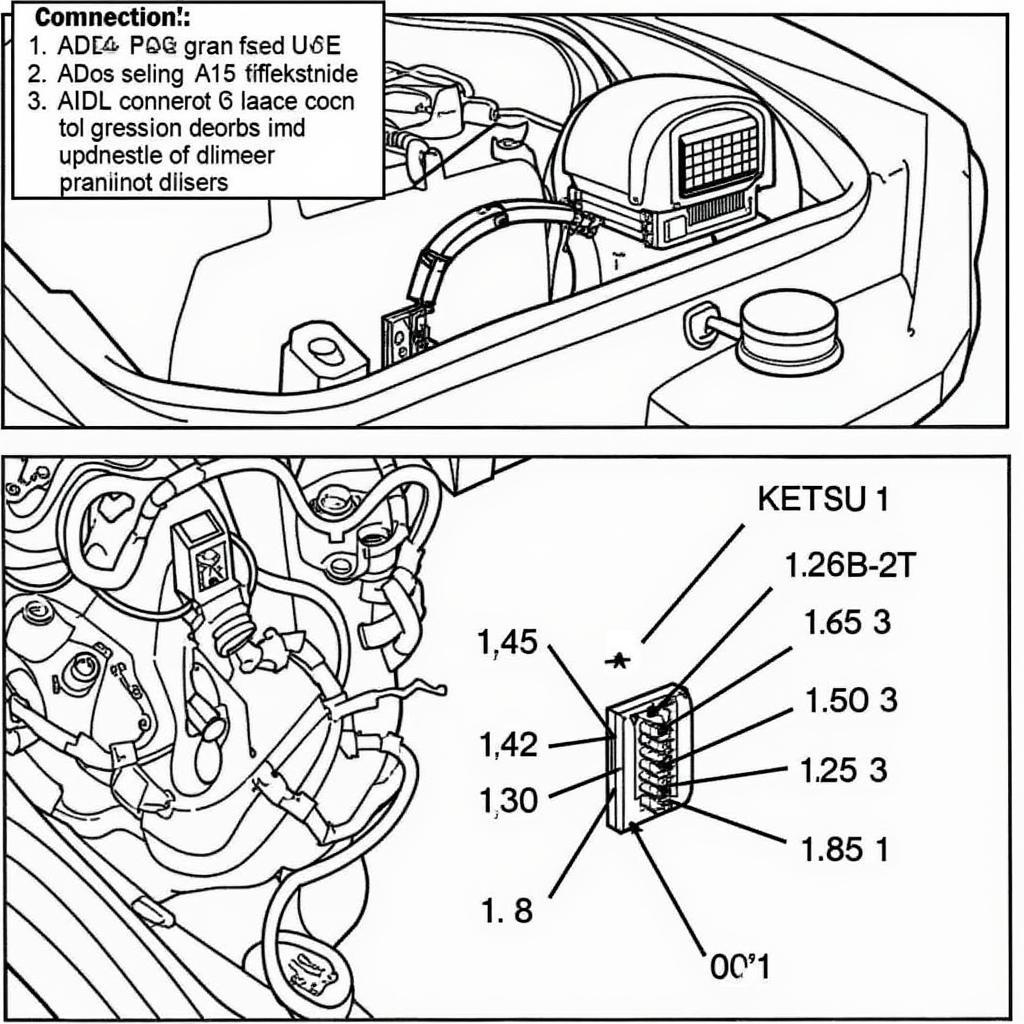
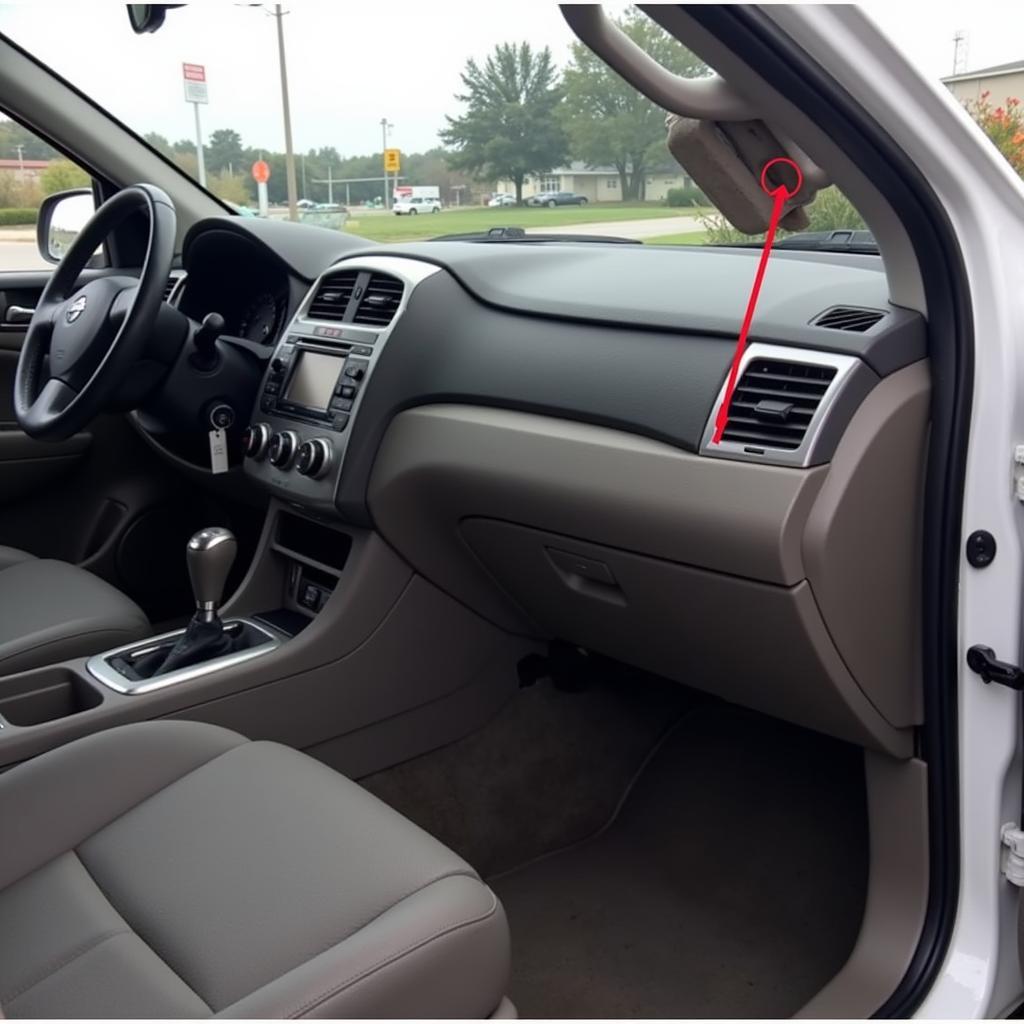
Pingback: Car Scanner DPF Regeneration: A Comprehensive Guide - Car Scan Tool
Pingback: Decoding Trouble Codes: Your Guide to Automobile Car Code Scanners - Car Scan Tool
Pingback: Transmission Scanner for Cars: A Comprehensive Guide - Car Scan Tool